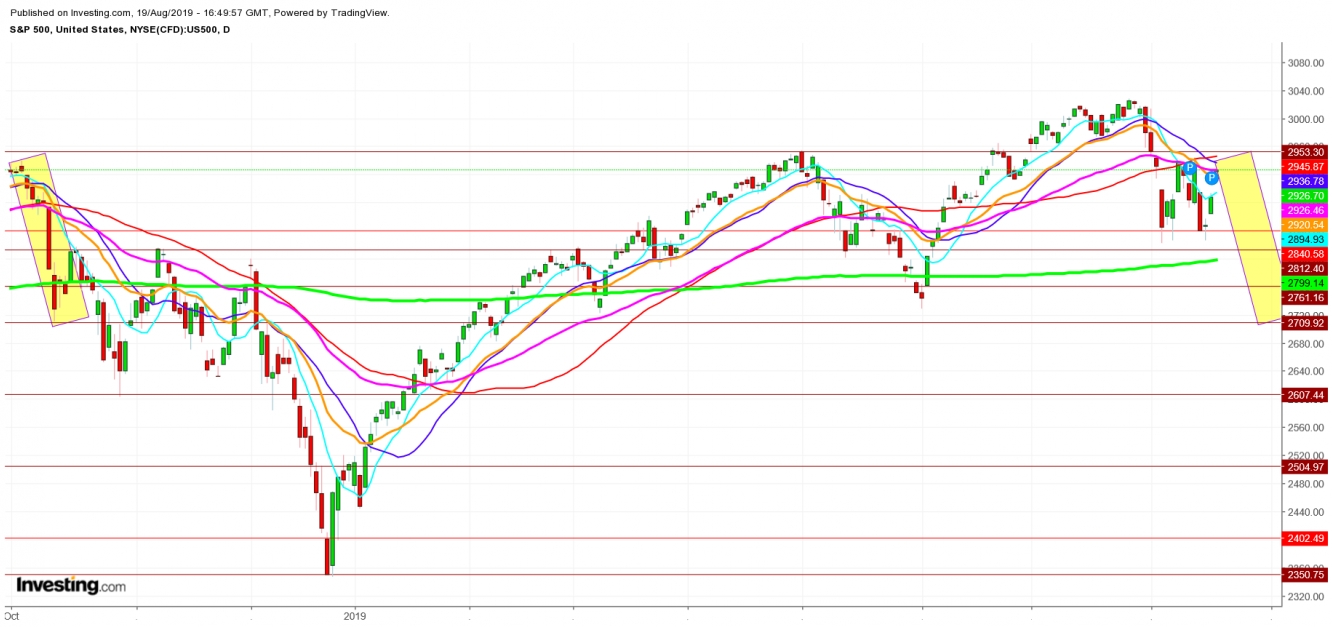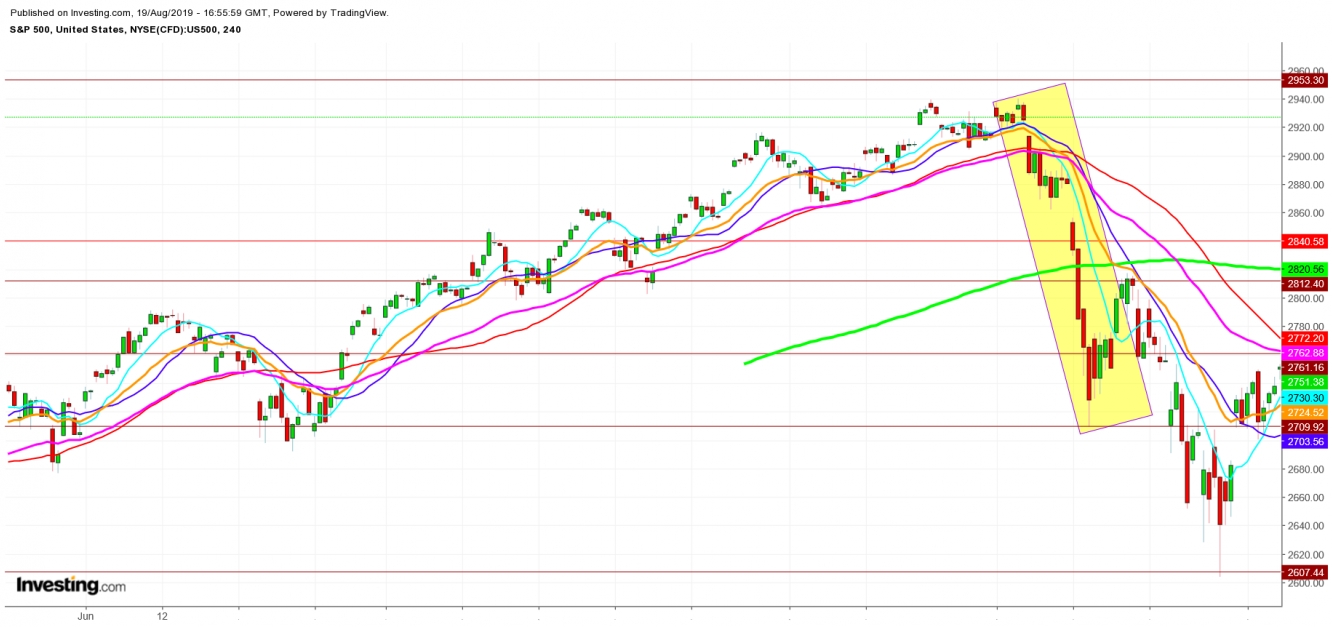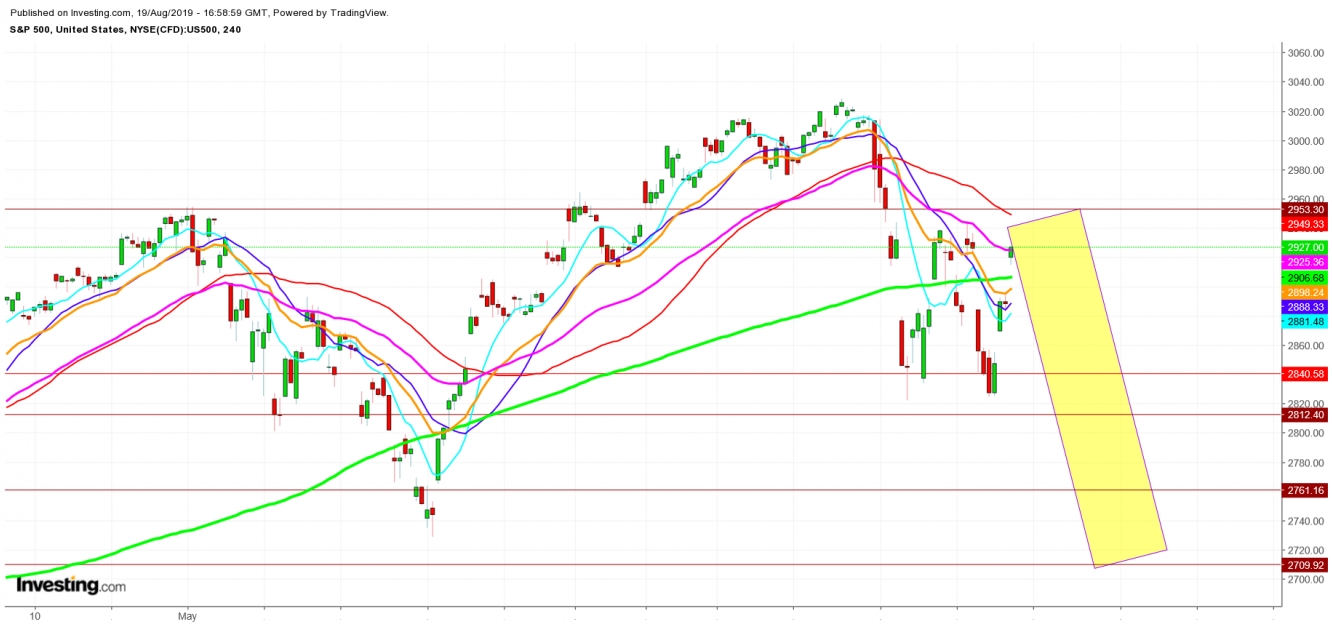Investing.com’s stocks of the week
On analysis of the movements of the S&P 500, I find that a gap-up opening with growing stimulus optimism before the Fed speaks on August 21 may turn into an “Exhaustive Candle” if the Fed remains accommodative this time too. No doubt that the U.S. president looks to remain accommodative on the tariff trade war with China by granting Huawei another 90 days to buy from American suppliers. Since President Trump and top White House officials dismissed concerns that economic growth may be faltering, saying on Sunday they saw little risk of recession despite a volatile week on global bond markets, and insisting their trade war with China was doing no damage to the United States; U.S. equity indices bounced back a little but still look under bearish pressure. I find that this denial of a recessionary impact on the U.S. economy can only be ignored by the president to paint a rosy picture for his election campaign for the November 2020 election. But the long-lasting damage caused by the tariff trade war has been constantly on the way till both the major economies finally resolve this.
Investors look too worried due to the inverted yield-curve, which was accurately predicted just before the last seven recessions. But it is important to understand that while recessions are always preceded by yield-curve inversions, inversions do not always lead to recessions. Fed has expressed its skepticism about the importance of the shape of the yield curve. They believe other factors influence the curve’s shape besides the future strength of the economy like the low level of term premiums, which can be affected by central-bank buying. Central-bank activity could undermine the accuracy of the yield curve as an indicator of economic activity. This is also the first yield-curve inversion since 2007-2008. Remember that when premiums are low, inversions can become more frequent without an increased risk of recession.
Finally, I find that the views expressed by the U.S. president on Sunday do not look impressive for equity bulls at this crucial juncture. No doubt that the opening levels of U.S. equity indices will define the real side of the impact of the tariff war on equity bulls. I find that despite the positive attitude shown by the president, he was less optimistic than his aides on striking a trade deal with China, saying that while he believed China was ready to come to an agreement, "I'm not ready to make a deal yet." He hinted that the White House would like to see Beijing resolve ongoing protests in Hong Kong first. "I would like to see Hong Kong worked out in a very humanitarian fashion," Trump said, adding, "I think it would be very good for the trade deal." No doubt, If we try to find the possible cause of the next “Market Crash,” we will not have to go too deep. There are a plethora of early signals that appear just before the advent of recessions every time in history.
I find that the S&P 500 looks ready to repeat the moves on August 21, 2019 in the same way it had from October 2, 2018 for the next two weeks. No doubt that the growing probabilities of an accommodative policy with future guidelines, which ought to be dovish, may entail steep sliding moves in the S&P 500.
To watch my upcoming video on the S&P 500, svisit my YouTube channel SS Analysis.



Disclaimer
1. This content is for information and educational purposes only and should not be considered as an investment advice or an investment recommendation. Past performance is not an indication of future results. All trading carries risk. Only risk capital be involved which you are prepared to lose.
2. Remember, YOU push the buy button and the sell button. Investors are always reminded that before making any investment, you should do your own proper due diligence on any name directly or indirectly mentioned in this article. Investors should also consider seeking advice from an investment and/or tax professional before making any investment decisions. Any material in this article should be considered general information, and not relied on as a formal investment recommendation.
